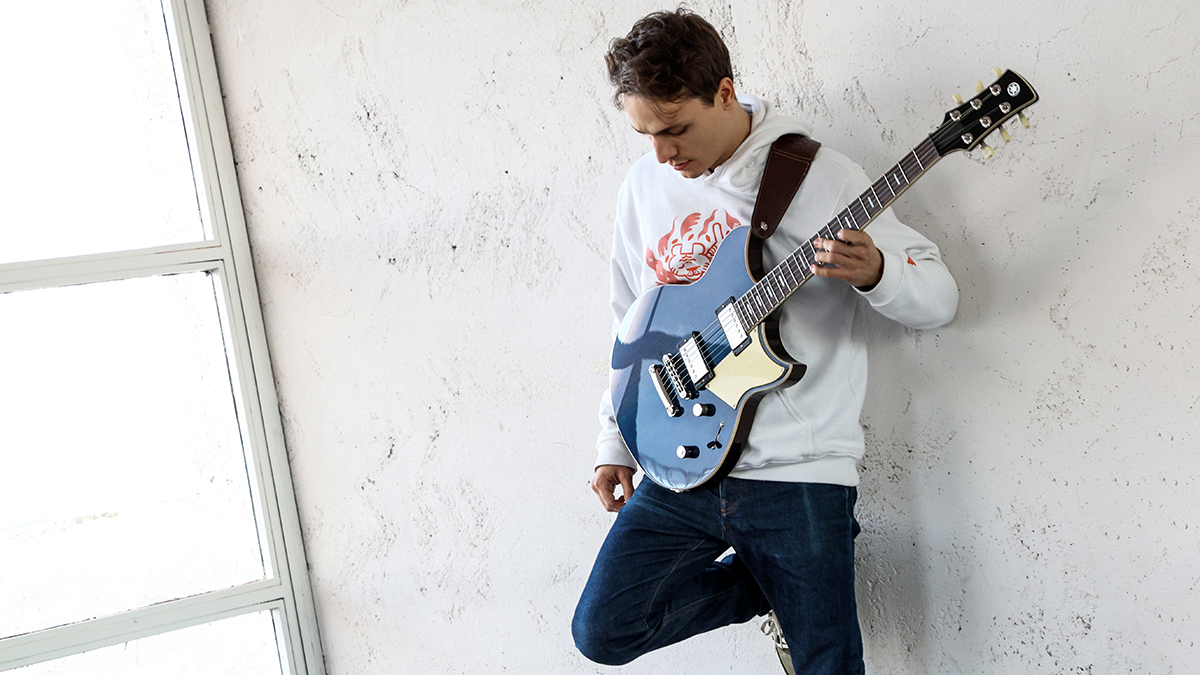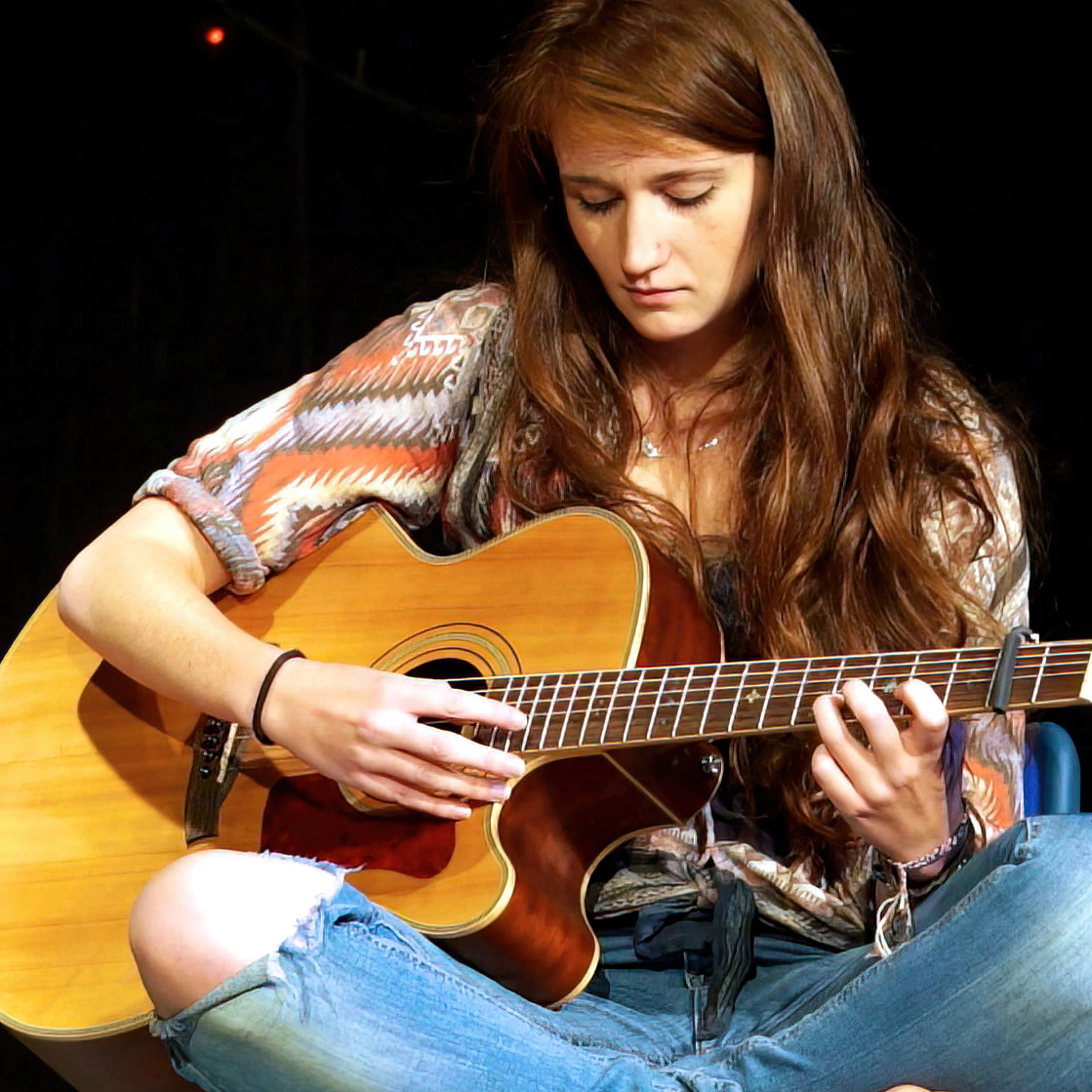“Sometimes it’s not really about complexity. There are some jazz tunes that are incredibly simple like AC/DC”: How Matteo Mancuso is redrawing the frontier for guitar and unlocking the fretboard one chord at a time
The fingerstyle fusion phenom talks technique, the illusion of jazz complexity – the reality of the guitar's complexity – and why everything is okay so long as you land on a good note

Matteo Mancuso is one of the most astonishing young guitar players on the planet. The jazz virtuoso’s flawless electric guitar skills and jaw-dropping fingerstyle techniques were first observed by thousands on YouTube and Instagram, before his debut album The Journey made him one of the most talked about players of 2023.
He’s won the admiration of masters like Al Di Meola, Joe Bonamassa and Tosin Abasi, and Steve Vai has declared the future of guitar to be safe, so long as people like Mancuso are around to keep the evolutionary wheels turning.
As Matteo himself says: “Jazz can be extremely simple as well as extremely complex. Complexity doesn’t mean that it’s good.” But as a player who combines elements of shred, jazz and classical styles, a lot of what he does is complex. In fact, his playing seems almost superhuman at times.
However, he utilises smart time-saving tactics rather than heavy theoretical principles to help him traverse the fretboard in show-stopping style. His motto: “Think less, play more…”
What are the fundamentals of your fingerstyle technique?
“I basically have two main positions. The first one is the appoggiato playing style, which is like the thing you see with most bass players. Then, there’s the straight classical guitar technique that I use more for arpeggio-based stuff, or if I have to do some string skipping arpeggios and things like that, because it’s easier to move across the strings if you also have your thumb available.
“When I’m playing appoggiato, I’m holding my thumb on the pickup most of the time, so I only have three fingers available. I can’t use my pinky so it’s always the index, middle and ring fingers. When I’m playing the other way – in Italian it’s called tocco libero – I can also use my thumb but I have slightly less volume. That’s basically how I play everything. It’s 100 percent fingerstyle!”
Get The Pick Newsletter
All the latest guitar news, interviews, lessons, reviews, deals and more, direct to your inbox!
How would you say your technique compares to other fingerstyle electric guitarists, such as Mark Knopfler?
“I know about Mark, but I didn’t really come up with this technique until I studied some classical guitar. Most of the techniques that I’m using are from the classical guitar world and some of them are from flamenco. Technically speaking, it’s more from the classical world than the electric world.”
For anyone who’s only ever played with a pick, what is your top tip for getting the fingers working?
“I’d suggest that the first step should be hybrid picking. It’s not fingerstyle and it’s not just picking, it’s a mix of both techniques. A perfect example of that would be Tom Quayle, who’s a British player that uses a pick, but at the same time also uses two fingers for some of his lines.
“A lot of modern players use this technique and I think it can be a good starting point. Then, if you want, you can get rid of the pick and start using your thumb and index.”
The thumb sounds more powerful on the low strings, so I prefer to use my thumb on the lower strings and use my three fingers for the others
How does using your fingers affect your tone?
“You get a darker tone and the attack is slightly different. With your three fingers, basically everything is an upstroke and the only downstroke is with the thumb. So sometimes, if you want to achieve a different sound, you may want to use a different finger.
“The thumb sounds more powerful on the low strings, so I prefer to use my thumb on the lower strings and use my three fingers for the others. An important thing is nails. I use my nails and they’re not too long. If you played only with the flesh, the sound would be too muddy and dark. With my nails, I can achieve a more defined attack.”

Do you use acrylics or just your natural fingernails?
“It’s a mix of both and, actually, I mostly use gel nails. I used acrylics some months ago, but I like the sound of the gel better because it’s a little bit softer and you get a different attack. Plus, it looks more like a real nail! My thumb is the only one that stays natural because I don’t really use it a lot, compared with the other three.”
I always suggest implementing some chromatics in your pentatonic scale. Whatever you play, it will sound good if you land on a good note
Jazz can be a tough style to break into. How could people start thinking about its principles in a way that feels accessible?
“When people think about jazz – especially guitar players – they think about theory and scales and strange arpeggios. Sometimes jazz is not really about that. Sometimes it’s not really about complexity. There are some jazz tunes that are incredibly simple like an AC/DC tune.
“A way that you can get into jazz is by listening to players that are in-between. I don’t always suggest Wes Montgomery or Barney Kessel because they’re too traditional. I’d suggest for a rock player to start with the fusion guys like Scott Henderson, Frank Gambale or Allan Holdsworth because they have the rock influence as well, so you can hear the similarities.”
How would you go about transforming a pentatonic lick into a jazz lick?
“There are multiple ways of doing it and it depends on the context. What I learned was: whatever you play, it will sound good if you land on a good note. I always suggest implementing some chromatics in your pentatonic scale.
“There are a lot of exercises and patterns you can do, and – if you want to land on a good note – there are passage notes you can use that are always a half-step above or a half-step below.
“If we have an example of B minor, you can use the target notes – which are simply the notes of the chord – and play around with the chromatic stuff. The important thing is that the landing note on the strong beat should be a note in the chord.”
How did you learn to visualise the fretboard?
“I’m still learning, honestly! The guitar is a really complex instrument to visualise because we don’t use a symmetrical tuning. It’s perfect 4ths and then there’s this major 3rd between the G and the B that screws everything up!
“I don’t always think about scale boxes. I prefer to think about chords and it’s the form of the chord that guides me. I know where the target notes are because I know the shape of the chord. Then I only have to know the extra notes that build the scale.
I don’t always think about scale boxes. I prefer to think about chords and it’s the form of the chord that guides me
“For example, if I do a major 7 chord, I already know that those four notes are good. In order to build a scale, I only have to add three more notes. Most of the time, I’m searching for just three more notes in my mind, and that builds the right notes for the context. I try not to think about modes.
“When I’m playing over a G7 altered chord, for example, I don’t want to think about Super Locrian because I don’t have the time, especially if I’m improvising. I just want to think about the closest relatable thing that’s available to me. So, instead of thinking about G Super Locrian, I’ll be thinking about Ab melodic minor because it’s the closest melodic minor I have and I know the melodic minor much better than the Super Locrian scale.”

What is your practice routine like?
“I try to grab the guitar, play every day and come up with different licks. Or, if there’s a song I like, I try to learn it. Maybe I’m on the lazy side of things, but I don’t like to have a structured practice routine where I play scales for an hour and then arpeggios for another hour.
“I don’t have the attention span to do that! I believe that if you learn songs it’s always a good choice because songs have a lot of things inside them that help you to become a better musician.
“When you’re learning a song, you learn the three basic foundations of music: rhythm, harmony and melody. You can study these things separately, but if you just study a song, you study them together. I think it’s more useful and you have more fun.”
You maintain quite a controlled sound even when playing rockier styles. What gear helps you achieve that?
“I’m a big fan of digital amp modelling. Contrary to most guitar players, I don’t really like tube amps in a live context. Digital is just more reliable. Even in the recording process, all the stuff you have to do to get good at recording amps just wasn’t for me. So, amp modelling was the right choice. Mostly, I use a Line 6 Helix and it’s my go-to for live and recording. Sometimes I also use plugins from Universal Audio.”
How do you set up your Revstar to suit your style?
“I usually use 0.010s as my go-to tension. The action isn’t really low because I don’t like string noise. I always try to keep it in good balance, even if I do tapping. I know it’s harder if you have a high action, but I prefer not to sacrifice the sound for economic playing.
“Right now, I have one which is the prototype of my future signature guitar. It’s a custom model made for me, but it’s not really a fancy guitar. It has Lollar Imperial pickups and locking tuners because I’m lazy about changing my strings!”
- The Journey is out now via Mascot Label Group/The Players Club.
Since graduating university with a degree in English, Ellie has spent the last decade working in a variety of media, marketing and live events roles. As well as being a regular contributor to GuitarWorld.com, she currently heads up the marketing team of a mid-scale venue in the south-west of England. She started dabbling with guitars around the age of seven and has been borderline obsessed ever since. She has a particular fascination with alternate tunings, is forever hunting for the perfect slide for the smaller-handed guitarist, and derives a sadistic pleasure from bothering her drummer mates with a preference for wonky time signatures.
“It holds its own purely as a playable guitar. It’s really cool for the traveling musician – you can bring it on a flight and it fits beneath the seat”: Why Steve Stevens put his name to a foldable guitar
“Finely tuned instruments with effortless playability and one of the best vibratos there is”: PRS Standard 24 Satin and S2 Standard 24 Satin review














